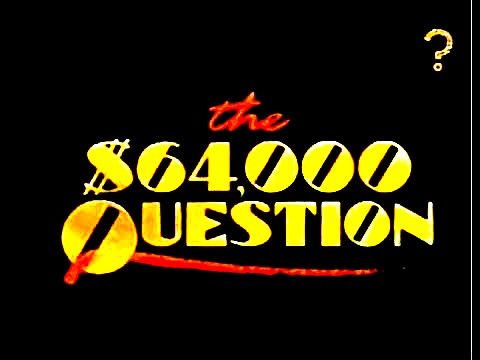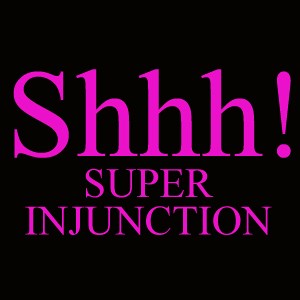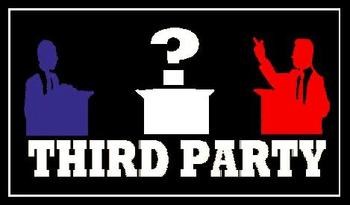The following extensive quote relating to the law of Proprietary Estoppel has been excerpted from the reason for judgement of Cowderoy v Sorkos Estate, 77 ETR (3d) 246, which was briefly blogged about on February 7.13 on this website.
P 68 “The modern doctrine of proprietary estoppel has its roots in two types of cases:
encouragement and acquiescence.
In the first, one party encourages the other in the expenditure of money or in doing something to their detriment in anticipation of having a right over certain land.
In the second, one party, who knows the true situation, stands by while the other spends money on land over which the latter mistakenly believes to have a right. More on that distinction below
. Another important aspect of modern proprietary estoppel is that it can be used as a cause of action, rather than just a defense: see Crabb v. Arun District Council (197’5). T1976] 1 Ch. 179 (Eng. C.A.) and Eberts v. Carleton Condominium Corp. No. 396(2000). 136 O.A.C. 317(Ont. C.A.). This is contrary to the well known mantra that estoppel may be used as a shield, but not a sword.
- The foundation of modern proprietary estoppel is the House of Lords decision in Ramsden v. Dvson (1 866). L.R. 1 H.L. 129 (U.K. H.L.). In that case, it was alleged that a landlord had encouraged the belief in his tenants that if they took his land and built on it they would be entitled to a sixty year lease, renewable every twenty years. Two classic statements of the principle of proprietary estoppel have been extracted from the judgments in this case of Lord Cranworth, for the majority, and Lord Kingsdown, in dissent.
- Lord Cranworth focused on the requirement of mistake:
pp6-7 If a stranger begins to build on my land supposing it to be his own, and I, perceiving his mistake, abstain from setting him right, and leave him to persevere in his error, a Court of equity will not allow me afterwards to assert my title to the land on which he had expended money on the supposition that the land was his own. It considers that, when I saw the mistake to which he had fallen, it was my duty to be active and to state my adverse title; and that it would be dishonest in me to remain wilfully passive on such an occasion, in order afterwards to profit by the mistake which I might have prevented.
But it will be observed that to raise such an equity, two things are required, first, that the person expending the money supposes himself to be building on his own land; and, secondly, that the real owner knows that the land belongs to him and not to the person expending the money in the belief that he is the owner.
71 On the other hand, Lord Kingsdown took a broader approach, saying:
P21 The rule of law applicable to the case appears to me to be this: If a man, under a verbal agreement with a landlord for a certain interest in land, or, what amounts to the same thing, under an expectation, created or encouraged by the landlord, that he shall have a certain interest, takes possession of such land, with the consent of the landlord, and upon the faith of such promise or expectation, with the knowledge of the landlord, and without objection by him, lays out money upon the land, a Court of equity will compel the landlord to give effect to such promise or expectation.
- These two statements, one requiring mistake and the other not, illustrate the two branches from which proprietary estoppel arose: acquiescence and encouragement. Both statements were considered by the Privy Council in Plimmer v. Wellington Corp. (1884). (1883-84) L.R. 9 App. Cas. 699 (New Zealand P.C.). In that case, the plaintiff had erected a wharf and jetty on Government land with the Government’s permission. The Government then encouraged the plaintiff to extend the jetty and erect a warehouse, which the plaintiff did at his own expense. After some time, the Government took the position that the plaintiff was trespassing on Government land. In considering Ramsden v. Dvson.the Privy Council stated that there was actually no disagreement on the principles in law in that case. The two judges merely placed different interpretations on the facts before them, and therefore arrived at different legal conclusions. The Court appeared to take Lord Cransworth’s statement as relating to acquiescence and Lord Kingsdown’s as relating to encouragement. Following Lord Kingsdown’s statement of the law, the Court held that the instant case was not one where the landowner stood silently by while the plaintiff mistakenly improved the landowners land. Rather, it was a case where the landowner had encouraged the plaintiffs improvement. The court held that it would therefore be unjust of the Government to later seek to deprive the plaintiff of his use of the land.
- Willmott v. Barber (1880). 15 Ch. D. 96 (Eng. Ch. Div.) laid down what came to be known as the “five probanda” required to establish the “fraudulent conduct” necessary to ground proprietary estoppel:
p.5 A man is not to be deprived of his legal rights unless he has acted in such a way as would make it fraudulent for him to set up those rights. What, then, are the elements or requisites necessary to constitute fraud of that description? In the first place the plaintiff must have made a mistake as to his legal rights. Secondly, the plaintiff must have expended some money or must have done some act (not necessarily upon the defendant’s land) on the faith of his mistaken belief. Thirdly, the defendant, the possessor of the legal right, must know of the existence of his own right which is inconsistent with the right claimed by the plaintiff. If he does not know of it he is in the same position as the plaintiff, and the doctrine of acquiescence is founded upon conduct with a knowledge of your legal rights. Fourthly, the defendant, the possessor of the legal right, must know of the plaintiffs mistaken belief of his rights. If he does not, there is nothing which calls upon him to assert his own rights. Lastly, the defendant, the possessor of the legal right, must have encouraged the plaintiff in his expenditure of money or in the other acts which he has done, either directly or by abstaining from asserting his legal right. Where all these elements exist, there is fraud of such a nature as will entitle the Court to restrain the possessor of the legal right from exercising it,
but in my judgment, nothing short of this will do.
- In the English jurisprudence, at least, there appears to have been movement away from the strict application of the five probanda in favour of asking whether it would be unconscionable to allow the Defendant to rely on a strict application of his or her legal right. The English Court of Appeal in Shaw v. Applesate. \ 19771 1 W.L.R. 970 (Eng. C.A.) after citing the above statement from Willmott v. Barber,noted at p.6-7 that while it was doubtful that it was necessary to comply strictly with the five probanda, if they were established, then unconscionability was likely proven.
- A similar determination was reached in Taylors Fashions Ltd. v. Liverpool Victoria Trustees Co. (1979). r 19821 1 O.B. 133(Eng. Ch. Div.). In that case, an important question was whether, at the time when A’s expectation is created and encouraged, B had to know of A’s expectation and also of B’s true rights. The court noted that the strict application of the five probanda might be necessary in a bare acquiescence case (where all that has happened is that B has stood by and allowed A to act to his detriment). However, the court went on to state that at p. 13:
I am not at all convinced that it is desirable or possible to lay down hard and fast rules which seek to dictate, in every combination of circumstances, the considerations which will persuade the court that a departure by the acquiescing party from the previously supposed state of law or fact is so unconscionable that a court of equity will interfere.
76 And at p. 15:
…the application of the Ramsden v. Dyson, L.R. 1 H.L. 129 principle – whether you call it proprietary estoppel, estoppel by acquiescence or estoppel by encouragement is really immaterial – requires a very much broader approach which is directed rather at ascertaining whether, in particular individual circumstances, it would be unconscionable for a party to be permitted to deny that which, knowingly, or unknowingly, he has allowed or encouraged another to assume to his detriment than to inquiring whether the circumstances can be fitted within the confines of some preconceived formula serving as a universal yardstick for every form of unconscionable behaviour.
77 In Ontario, the Court of Appeal in Eberts v. Carleton Condominium Corp. No. 396. supra, at para. 23 accepted
the following test for proprietary estoppel:
23 Proprietary estoppel is a form of promissory estoppel. It is commonly supposed that estoppel cannot give rise to a cause of action, but proprietary estoppel appears to be an exception to that rule: see Lord Denning in Crabb v. Arun District Council. \ 19761 1 Ch. 179 at 187-188(C.A.). But there must be an estoppel. The basic tenets of proprietary estoppel are described in McGee, Snell’s Equity, 13 ed. (2000) at pp. 727-28:
Without attempting to provide a precise or comprehensive definition, it is possible to summarize the essential elements of proprietary estoppel as follows:
(i) An equity arises where:
(a)the owner of land (O) induces, encourages or allows the claimant (C) to believe that he has or
will enjoy some right or benefit over O’s property;
(b)in reliance upon this belief, C acts to his detriment to the knowledge of O; and
(c)O then seeks to take unconscionable advantage of C by denying him the right or benefit which he
expected to receive.
(iv) The relief which the court may give may be either negative, in the form of an order restraining O from asserting his legal rights, or positive, by ordering O to either grant or convey to C some estate, right or interest in or over his land, to pay C appropriate compensation, or to act in some other way.
- The Ontario Court of Appeal recently considered the application of the doctrine of proprietary estoppel to the facts in Schwark Estate v. Cutting. 2010 ONCA 61.316 D.L.R. (4th) 105 (Ont. C.A.).
- In Schwark. ibid, the dispute was over access to a beach from cottages. The defendant owners of vacant beach front lots had granted permission to the plaintiffs to access the lakefront over their waterfront lots in return for permission to use stairs the plaintiffs had constructed to access the beach. That arrangement continued for more than 30 years over which period the defendants acquiesced the use the plaintiffs made of the defendant’s beachfront lots to gain access to the waterfront.
- When the defendants withdrew their permission for access to the waterfront, the plaintiffs started the action claiming that they had obtained a right based on proprietary estoppel for access to the waterfront.
- The Court of Appeal in Schwark. ibid, noted at para. 16:
16 The law with respect to proprietary estoppel is well-settled. This court has accepted that Snell’s Equity properly discloses the elements necessary to establish proprietary estoppel as:
- encouragement of the plaintiffs by the defendant owner,
- detrimental reliance by the plaintiffs to the knowledge of the defendant owner, and
- the defendant owner now seeks to take unconscionable advantage of the plaintiff by reneging on an earlier promise.
82 In allowing the appeal in favour of the defendant owners of the waterfront lots, the Court stated:
- The facts established in this case fall far short of what is required to establish proprietary estoppel.
- …the respondents knew they had no legal right to use the water lots….
- There was no evidence of any holding out or inducement… which could be said to have caused the respondents to believe they had some right or benefit over …the water lots. They were merely granted permission to use it for a time. There is no evidence that they acted to their detriment in any way by relying on a belief that they had such a right….
- Lastly, there is nothing unconscionable about a property owner, who, having permitted his neighbor to use his property for a time, withdraws that permission.
83 In considering whether the doctrine of proprietary estoppel applied to the facts in Schwark. supra, the Court of
Appeal reviewed Willmott v. Barber,supra and Crabb v. Arun District Council, supra. The court noted the separate
reasons of Scarman L.J. in Crabb v. Arun District Councilwhere he considered the judgment of Fry J. in Willmott v.
Barber,supra at pages 105-6 of that judgment in which he identified what came to be known as the “five probanda” required to establish the “fraudulent conduct” for a finding of proprietary estoppel. The Ontario Court of Appeal in Schwark.supra, stated:
291 take from this that in order to establish unconscionabihty one must meet the five-part test laid out by Fry J. in Willmott.
84 I note that the court Willmott v. Barber, suprat was faced with acquiescence, rather than encouragement, the
two branches of proprietary estoppel as developed in the reasons of Lord Carnworth and Lord Kingsdown respec
tively, in Ramsden v. Dyson,supra. In my view, the five probanda, as developed in Willmott v. Barber,supra, apply to
the acquiescence branch of proprietary estoppel. Not all five are necessarily required to support the application for
proprietary estoppel founded on encouragement. In support of that position, I rely in part on this prefix of the outline
of the five probanda by Fry J. in Willmott v. Barber,supra:
… What, then, are the elements or requisites necessary to constitute fraud of that description?
It is clear from the development of the doctrine of proprietary estoppel that a finding of fraud may, in some instances, be a necessary element, but is not required in others. The latter instance would appear to apply to Scliwark Estate v. Cutting,supra. As the Court of Appeal in Schwark held that the elements necessary to establish a proprietary estoppel were not made out in that case, I note that the observation by the court that “to establish unconscionability”, one must meet the five-part test laid out by Fry J. in Willmott v. Barber,supra, is obiter to its decision.
- I also note that the British Columbia Court of Appeal in Erickson v. Jones. 2008 BCCA 379 (B.C. C.A.) at pp. 10-11, adopted the statement in the concurring judgment of Newbury J. A. in Trethewey-Edge Dyking (District) v. Coniagas Ranches Ltd.. 2003 BCCA 197(B.C. C.A.) that “the five elements or ‘probanda’ famously cited by Fry J. in Willmott v. Barber…have now been overtaken by a broader and less literal approach to proprietary estoppel.”
- A brief view of the development of testamentary cases in English jurisprudence may now be in order.
- Perhaps the earliest case involving the roots of proprietary estoppel and testamentary dispositions is Dillwyn v. Llewellyn (1862). 45 E.R. 1285 (Eng. Ch. Div.). The Court found that the son was entitled to the property, because the father had given the son the land in order for him to build a house, and the son had expended a large amount of money in doing so.
- Later cases did not require that the claiming party build or expend money on the land. It was sufficient if they behaved in a way that was to their detriment. In Greasley v. Cooke, \ 19801 1 W.L.R. 1306 (Eng. C.A.). the plaintiffs claimed possession of a house occupied by the defendant. The defendant had entered into the home of Arthur Greasley, a widower with four children, as a housekeeper. She later lived in that house with one of his sons, Kenneth, as husband and wife. During this period, the defendant ran the household and cared for his mentally ill younger sister. As a result of his father’s death, Kenneth had a half share in the house, which on his death went to his brother. The remaining family sought to turn the defendant out of the house. The defendant claimed that Kenneth and other members of the family had led her to believe that she could stay in the home for the rest of her life. The trial judge found that the claim of proprietary estoppel could not succeed because the defendant had not acted to her detriment.
- On appeal, Lord Denning concluded that expenditure of money was not a necessary element of proprietary estoppel. He stated at p.5:
[i]t is sufficient if the party, to whom the assurance is given, acts on the faith of it- in such circumstances that it would be unjust and inequitable for the party making the assurance to go back on it.
In Gillett v. Holt (2000). r20011 Ch. 210 (Eng. C.A.), the plaintiff Gillett spent his life working as a farm manager and as a friend to the defendant Holt. When Gillett was 15, Holt asked him to leave school and work full time at Holt’s farm, which he did. Over the years, Holt made several statements to Gillett that he would have the farm when he died. Holt had also made a will, leaving the entire estate to Gillett absolutely.
- However, there was a falling out between the parties which occurred when a Mr. Wood appeared on the scene. Mr. Wood and Holt quickly developed a strong attachment and Mr. Wood replaced Gillett as the principal beneficiary in Holt’s will. Gillett brought a claim in proprietary estoppel.
- The Court reviewed Taylor v. Dickens (1997). T19981 1 F.L.R. 806 (Eng. Ch. Div.) which required that the defendant not only encourage a belief in the plaintiff that he will be given a right over the defendant’s property, but must also encourage the belief that the defendant will not exercise his right to change his mind. The Court in Gillett v. Holt, supra, disagreed with this statement of the law, noting at p. 14:
the inherent revocability of testamentary dispositions…is irrelevant to a promise or assurance that ‘all this will be yours'”. …even when the promise or assurance is in terms linked to the making of a Will… the circumstances may make clear that the assurance is more than a mere statement of present(revocable) intention, and is tantamount to a promise.
- The Court found that Holt repeated his assurances over a long period of time, in front of other family members and usually in relatively unambiguous language. The Court held that Gillett relied on these promises to his detriment and subordinated his wishes to those of Mr. Holt. The Court held that Gillett had satisfied the requirements of proprietary estoppel.
- The House of Lords considered the issue of proprietary estoppel in the setting of a testamentary disposition in Thornerv. Major. r20091 UKHL 18 (U.K. H.L.). In that case, the claimant had helped the deceased (his uncle) on his farm until the latter’s death, with no payment for his services. The uncle had made various remarks which led the claimant to hope and later, to expect that he would inherit the farm on his uncle’s death. The uncle had also made a Will leaving his estate to the claimant, but destroyed it after felling out with one of the other beneficiaries. The court held that it was a necessary element of proprietary estoppel that the assurances given to the claimant should relate to identified property and that there had been assurances made by the uncle to the claimant that the latter would inherit the farm. As mere was sufficient certainty of the subject matter to found proprietary estoppel, the court held for the claimant
- On the question of the application of proprietary estoppel to testamentary dispositions, I reviewed the Canadian decisions of Tarling Estate, Re. r20081 O.J. No. 3009 (Ont. S.C.J.), Anderson v. Anderson. 2010 BCSC 911 (B.C. S.C.) and Belvedere v. Brittain Estate. 2009 ONCA 1 (Ont. C.A.). These cases, in my view, do not apply in a helpful way to this question.”








